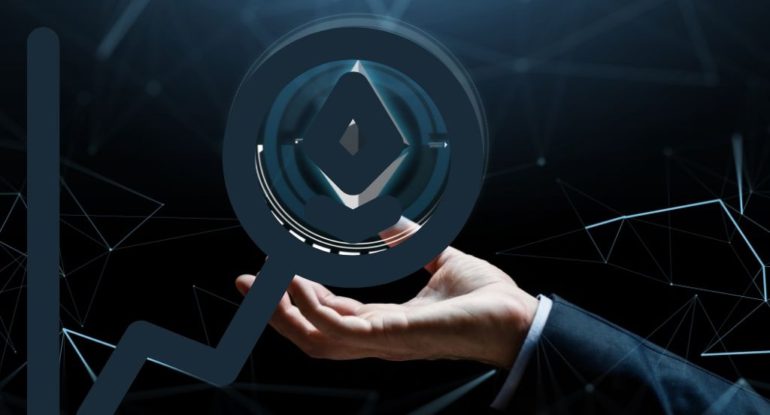How Should We Operate With The Ethereum 2.0 network?

The objective of the Ethereum blockchain is to do what Bitcoin has been unable to do. Ethereum cannot reach its full potential because Bitcoin imposes several constraints that hinder it from doing so. The focus on a proof-of-work (PoW) consensus method and the lack of scalability are examples of these limitations. Buterin and the ETH group predict that it will take several years to accomplish their plan to upgrade the Ethereum network, which they have termed Ethereum 2.0, to solve Ethereum’s scalability difficulties. According to the information, Ethereum 2.0 would include a new consensus method for the network.
An essential piece of #Ethereum’s Serenity upgrade, the Beacon Chain’s deposit contract, is live. This begins a transition to #Eth2.@EthDotOrg Guide: https://t.co/PkKwLnXKS4
Launchpad: https://t.co/CFgFwAs46f
Deposit Contract Address: 0x00000000219ab540356cBB839Cbe05303d7705Fa— Ethereum (@ethereum) November 4, 2020
Ethereum 2.0 will alter the network’s consensus procedure. Ethereum 2.0 will transition to Proof-of-Stake. Proof-of-stake, sometimes known as PoS, is an alternative to the energy-intensive proof-of-work mechanism now used to run the Ethereum blockchain. In terms of scalability, security, and accessibility, a proof-of-work method may provide benefits over a proof-of-stake system.
Also read: 5 Interesting Facts About Ethereum Blockchain Co-Creator – Vitalik Buterin
According to information, the Beacon Chain was developed during Phase 0 of the Ethereum 2.0 upgrade. This was done to assist the transition to PoS and allow users to stake Ethereum to become validators. On the other hand, it is anticipated that Ethereum’s main net and beacon chain would be linked to regulate and manage the PoS system. Early validators are believed to relate to the project’s prospective consequences. Phase 1 of Ethereum 2.0 is intended to include the unification of the Beacon Chain with the mainnet. Ethereum 2.0’s whole transaction history will be recorded on the Proof-of-Stake (PoS) network, allowing smart contracts. The territory will also be accessible to observers and validators after Phase 1 begins. With Ethereum 2.0, validators and other users can manage their shards, allowing them to validate transactions and avoid problems on the mainchain. During Phase 2 of the project, Ethereum Web Assembly (eWASM), a subset of Web Assembly that will be utilized for the Ethereum smart contract execution layer, will be deployed. This platform will enable users worldwide to execute smart contracts and interact with decentralized applications (dApps). Nonetheless, there has been a delay in Phase 2’s implementation.
Expertise with Ethereum is required.
Many people looking for a trustworthy Ethereum Skill Path will undoubtedly struggle to acquire the necessary abilities. Ethereum experts’ responsibilities reveal that they have a variety of professional tasks that vary depending on the organization’s objectives. To become an Ethereum expert, you’ll need a diverse collection of abilities, including those listed below.
- Fluency in all aspects of software development.
- Working with large codebases and open-source projects is a must.
- Programming languages such as C++ and JavaScript require a high level of proficiency.
- In-depth knowledge of data structures and commonly used methods.
- Basic understanding of P2P networks and cryptography.
Concurrency and multithreaded code are two aspects of Ethereum programming that you should be familiar with.
The abilities needed to become an Ethereum developer or expert demonstrate how tough it is to make a living in Ethereum. However, it’s also vital to consider the long-term potential for Ethereum developers and Ethereum experts as their careers progress. The strong push for DeFi applications will promote further Ethereum adoption, necessitating the learning of Ethereum by professionals as soon as possible.
The typical compensation of an Ethereum developer currently ranges from $120,000 to $170,000, depending on expertise and role. As a result, one can fairly seek prospects for job advancement in Ethereum by overcoming the challenges of familiarizing oneself with the difficult skill requirements.
What Does it Take to Become an Ethereum Expert?
If you want to become an Ethereum expert, you must first understand the scope of the project. Is it simple for everyone to gain Ethereum competence and get the professions they want? If that’s the case, what kinds of jobs can you expect as an Ethereum expert? Ethereum experts have a wide range of work prospects, ranging from Ethereum developers to ecosystem administrators.
The profession of an Ethereum developer is one of the most frequent and in high demand right now. In fact, you can train to be an Ethereum developer and utilize your knowledge to create decentralized applications. Other opportunities like an Ethereum expert, on the other hand, are available.
Ethereum Developers’ Responsibilities
The next crucial aspect to consider before evaluating an Ethereum skill path is a thorough understanding of an Ethereum expert’s or developer’s duties. An in-depth look at the roles of Ethereum experts and developers might help you figure out all the skills you’ll need to succeed in your Ethereum career. Here are some of the tasks that an Ethereum expert might have.
- Different blockchain technologies are being researched, designed, developed, and tested.
- Working on brainstorming and evaluating possibilities for introducing new technologies and tools as part of the ongoing evolution process.
- Experts in Ethereum must also make it easier to maintain client and service-side apps while ensuring that needed business logic and connectors are in place.
- Experts or developers in Ethereum must also be able to enhance the functionality of existing applications.
Documentation for the development of new solutions as well as the maintenance of project records.



























































